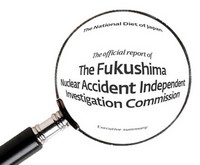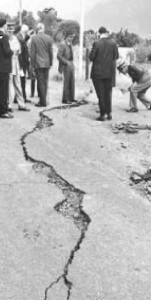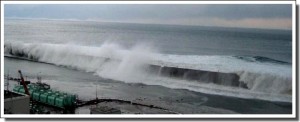This is according to the World Nuclear Association, which describes itself as “the only international industry organisation with a global mandate to communicate about nuclear energy”, and has members which include Rosatom, the Russian nuclear power company, as well as Areva of France, KEPCO of Korea, and many others. Continue reading
Continue reading
Category Archives: EIA
Government neglects nuclear waste
The Koeberg nuclear plant near Cape Town requires about thirty tons of uranium fuel per year. Unlike a fuel such as coal, this uranium is not burnt up. It undergoes a nuclear reaction, which transforms it into other elements, some of which are highly radioactive. Burning or any other chemical process does not reduce the radioactivity.
That means that over thirty tons of spent nuclear fuel (SNF) are removed from the reactors each year. So far over a million kilograms of this SNF (over 2000 fuel elements) have accumulated since Koeberg began operating in 1984.
Nuclear-1 Submission to Dept of Environmental Affairs
Before approval for a nuclear plant can be granted, by law an Environmental Impact Assessment (EIA) has to be done and submitted to the Department of Environmental Affairs (DEA).
The EIA for the so called ‘Nuclear-1’ project has been in progress for over six years, and the fourth and final draft of the resulting report was eventually submitted to the DEA in early 2016.
This report is of a low scientific standard, and should be rejected by the DEA.
We have made submissions on each draft to the EIA consultants, GIBB, which have been largely ignored, and have not resulted in the changes to the EIA report we hoped for.
We have therefore written to the DEA giving reasons why we believe they should reject this report.
To see our submission, including a short summary, click here: KAA Submission to DEA
Nuclear-1 EIA Report (3rd draft) deeply flawed
Below is the formal submission made to the GIBB Consultants who are running the Environmental Impact Assessment on behalf of Eskom.
Its a long read, so those with limited time can use the contents to find areas of specific interest.
While its hard to choose, there are three items of particular concern.
The first is the practically non-existent assessment of the risk of earthquake damage (see point 1), and the potential impact this could have. Continue reading
Eskom and GIBB living in la-la land
Eskom and the Department of Energy have recently cranked up efforts to move forward with the plans for more nuclear energy for South Africa. In the Environmental Impact Assessment being prepared by GIBB consultants, the background to this includes a graph of the predicted peak electricity demand. Here is the graph they use, on page 2 of the latest combined main report, released in September 2015: Continue reading
Earthquakes and Nuclear
As South Africa contemplates building nuclear power stations along the coast, consultants from GIBB have been given the job of assessing the potential impacts of doing this. This includes looking at the risks.
One obvious risk is that of an earthquake damaging the nuclear reactor, as happened in 2011 in Fukushima. To assess this risk, GIBB produced a specialist report in 2011 (i.e. done before Fukushima) titled “Appendix E4: Seismic Risk Assessment”. Continue reading
Proposed nuclear build outside Cape Town – public participation meetings
The government is asking the South African public for their input on the proposed nuclear build 30km outside Cape Town in a series of public meetings. These meetings are always attended by the few pro-nuclear stakeholders and it is important that the public also attend to share their concerns about safety, costs and environmental issues.
When?
Melkbosstrand: 18:00, 12 October 2015
Atlantic Beach Golf club
Kenliworth: 18:00, 13 October 2015
Kenilworth Community Presbyterian Church
Is it really worthwhile attending?
Yes! South Africa has an excellent constitution and powerful laws Continue reading
Official report on Fukushima – what can South Africa learn?
 An independent in depth report on the Fukushima nuclear disaster commissioned by the Japanese parliament was released in July 2012, and it comes to some very important conclusions. As Eskom attempts to get approval to build three more nuclear plants along the southern coast, South Africa should be looking very closely at this report to see if there are lessons we should learn from it.
An independent in depth report on the Fukushima nuclear disaster commissioned by the Japanese parliament was released in July 2012, and it comes to some very important conclusions. As Eskom attempts to get approval to build three more nuclear plants along the southern coast, South Africa should be looking very closely at this report to see if there are lessons we should learn from it.
The earthquake or the tsunami?
The nuclear industry has repeatedly made the claim Continue reading
The Nuclear-1 video they didn’t want you to see
As for any large project, the proposed building of a new nuclear power plant in South Africa required an Environmental Impact Assessment (EIA) process to be completed by independent experts. This results in an Environmental Impact Report (EIR) which must be presented to the public via a public participation process.
During some of these presentations, Peter Becker, of the Koeberg Alert Alliance videoed the proceedings. Continue reading

